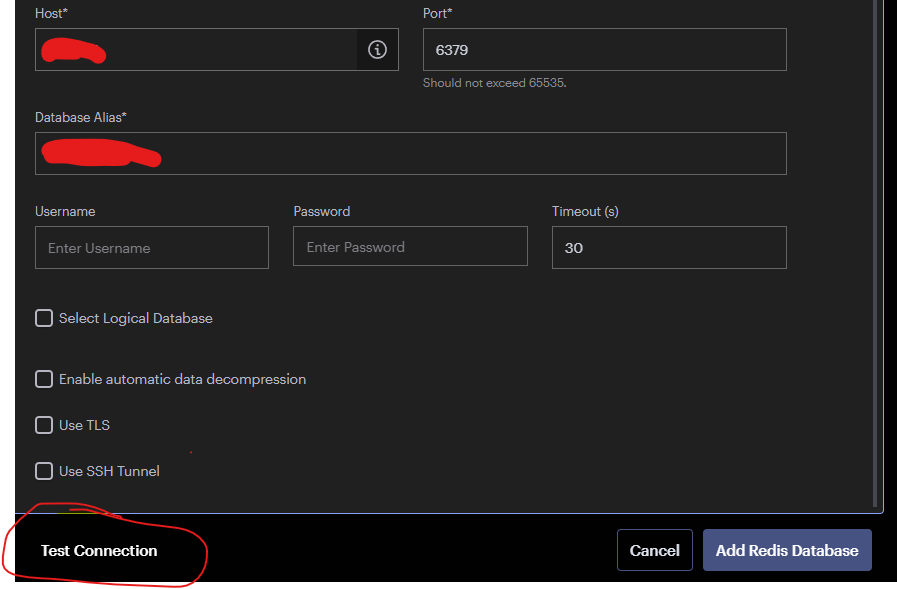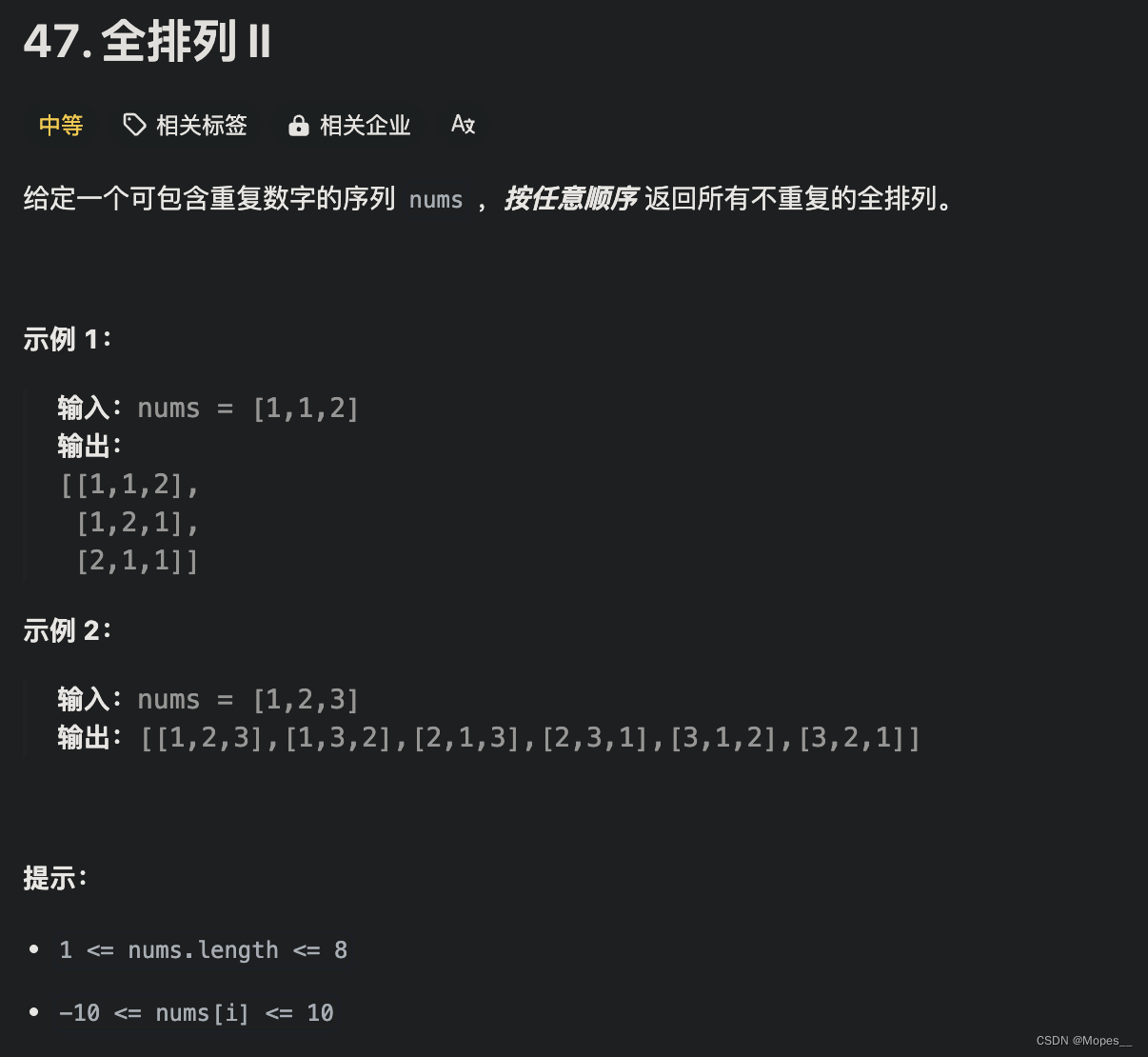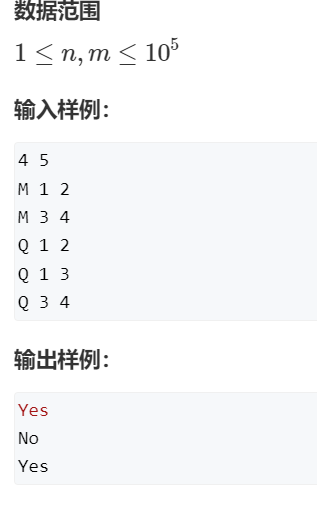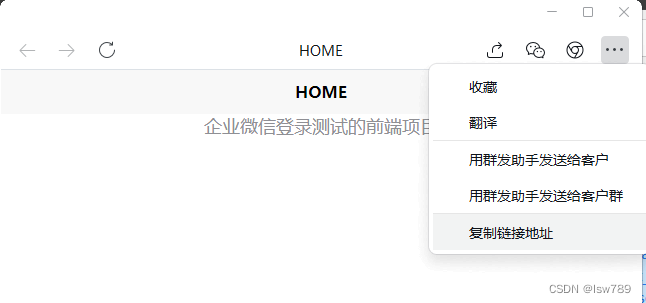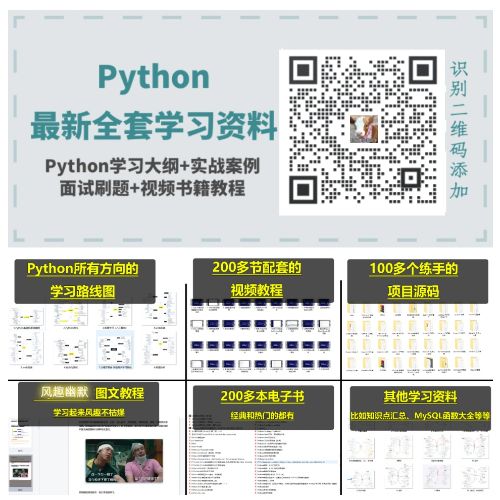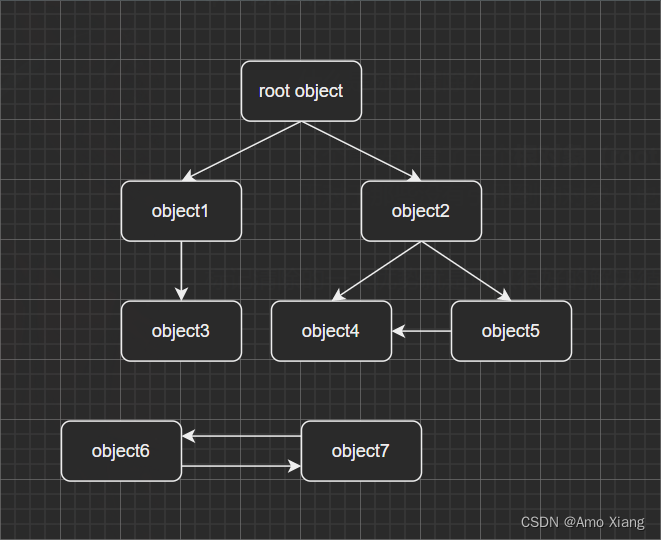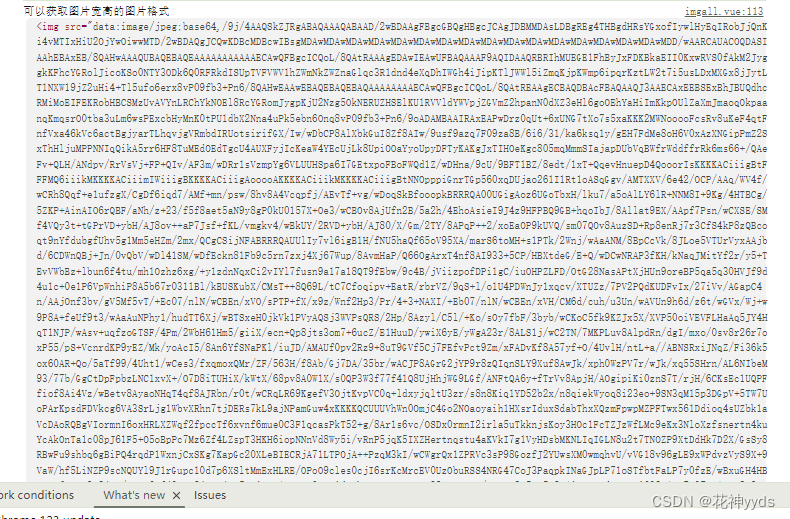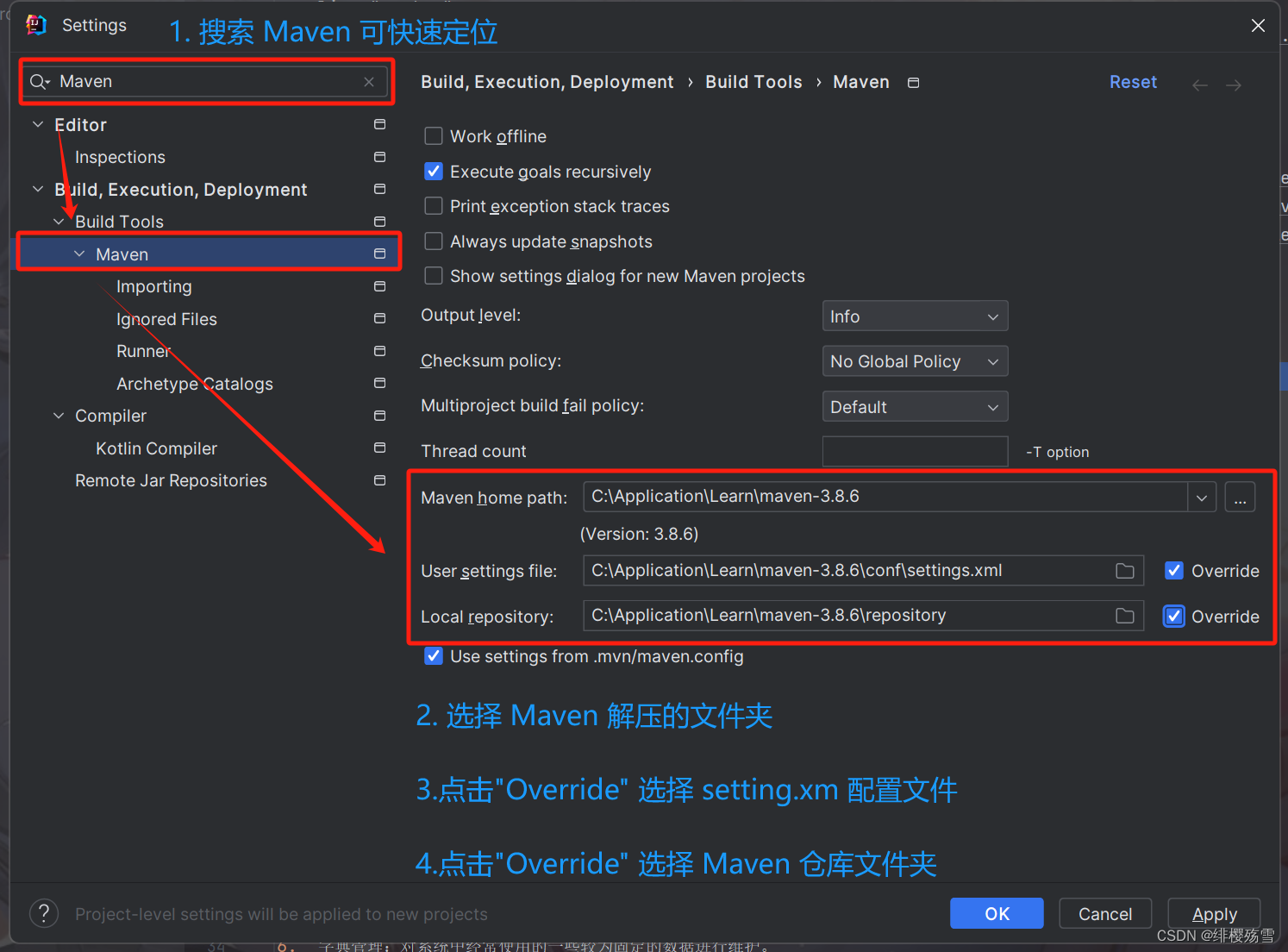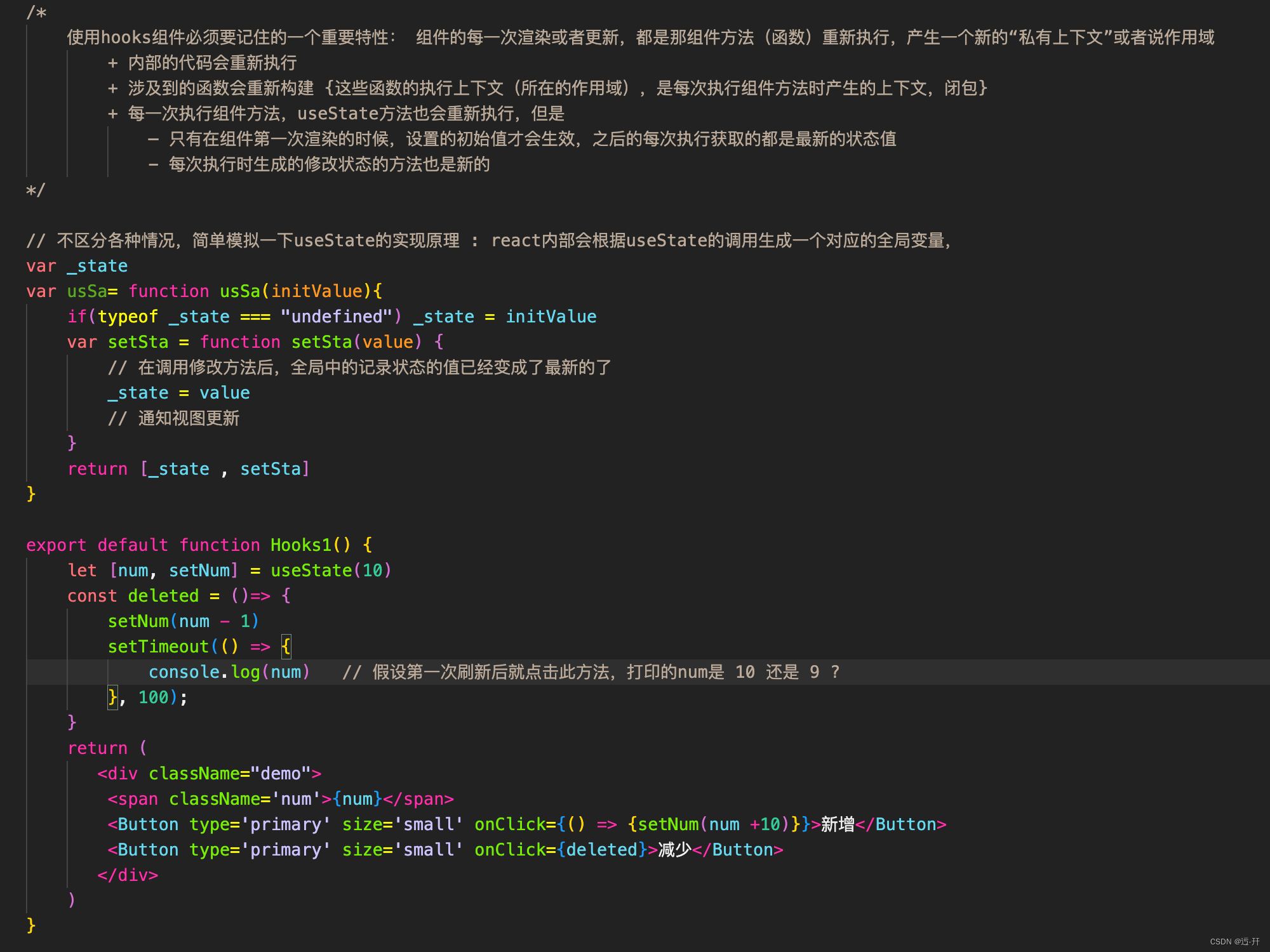原文:
pandas.pydata.org/docs/
扩展到大型数据集
原文:
pandas.pydata.org/docs/user_guide/scale.html
pandas 提供了用于内存分析的数据结构,这使得使用 pandas 分析大于内存数据集的数据集有些棘手。即使是占用相当大内存的数据集也变得难以处理,因为一些 pandas 操作需要进行中间复制。
本文提供了一些建议,以便将您的分析扩展到更大的数据集。这是对提高性能的补充,后者侧重于加快适���内存的数据集的分析。
加载更少的数据
假设我们在磁盘上的原始数据集有许多列。
In [1]: import pandas as pd
In [2]: import numpy as np
In [3]: def make_timeseries(start="2000-01-01", end="2000-12-31", freq="1D", seed=None):
...: index = pd.date_range(start=start, end=end, freq=freq, name="timestamp")
...: n = len(index)
...: state = np.random.RandomState(seed)
...: columns = {
...: "name": state.choice(["Alice", "Bob", "Charlie"], size=n),
...: "id": state.poisson(1000, size=n),
...: "x": state.rand(n) * 2 - 1,
...: "y": state.rand(n) * 2 - 1,
...: }
...: df = pd.DataFrame(columns, index=index, columns=sorted(columns))
...: if df.index[-1] == end:
...: df = df.iloc[:-1]
...: return df
...:
In [4]: timeseries = [
...: make_timeseries(freq="1min", seed=i).rename(columns=lambda x: f"{x}_{i}")
...: for i in range(10)
...: ]
...:
In [5]: ts_wide = pd.concat(timeseries, axis=1)
In [6]: ts_wide.head()
Out[6]:
id_0 name_0 x_0 ... name_9 x_9 y_9
timestamp ...
2000-01-01 00:00:00 977 Alice -0.821225 ... Charlie -0.957208 -0.757508
2000-01-01 00:01:00 1018 Bob -0.219182 ... Alice -0.414445 -0.100298
2000-01-01 00:02:00 927 Alice 0.660908 ... Charlie -0.325838 0.581859
2000-01-01 00:03:00 997 Bob -0.852458 ... Bob 0.992033 -0.686692
2000-01-01 00:04:00 965 Bob 0.717283 ... Charlie -0.924556 -0.184161
[5 rows x 40 columns]
In [7]: ts_wide.to_parquet("timeseries_wide.parquet")
要加载我们想要的列,我们有两个选项。选项 1 加载所有数据,然后筛选我们需要的数据。
In [8]: columns = ["id_0", "name_0", "x_0", "y_0"]
In [9]: pd.read_parquet("timeseries_wide.parquet")[columns]
Out[9]:
id_0 name_0 x_0 y_0
timestamp
2000-01-01 00:00:00 977 Alice -0.821225 0.906222
2000-01-01 00:01:00 1018 Bob -0.219182 0.350855
2000-01-01 00:02:00 927 Alice 0.660908 -0.798511
2000-01-01 00:03:00 997 Bob -0.852458 0.735260
2000-01-01 00:04:00 965 Bob 0.717283 0.393391
... ... ... ... ...
2000-12-30 23:56:00 1037 Bob -0.814321 0.612836
2000-12-30 23:57:00 980 Bob 0.232195 -0.618828
2000-12-30 23:58:00 965 Alice -0.231131 0.026310
2000-12-30 23:59:00 984 Alice 0.942819 0.853128
2000-12-31 00:00:00 1003 Alice 0.201125 -0.136655
[525601 rows x 4 columns]
选项 2 仅加载我们请求的列。
In [10]: pd.read_parquet("timeseries_wide.parquet", columns=columns)
Out[10]:
id_0 name_0 x_0 y_0
timestamp
2000-01-01 00:00:00 977 Alice -0.821225 0.906222
2000-01-01 00:01:00 1018 Bob -0.219182 0.350855
2000-01-01 00:02:00 927 Alice 0.660908 -0.798511
2000-01-01 00:03:00 997 Bob -0.852458 0.735260
2000-01-01 00:04:00 965 Bob 0.717283 0.393391
... ... ... ... ...
2000-12-30 23:56:00 1037 Bob -0.814321 0.612836
2000-12-30 23:57:00 980 Bob 0.232195 -0.618828
2000-12-30 23:58:00 965 Alice -0.231131 0.026310
2000-12-30 23:59:00 984 Alice 0.942819 0.853128
2000-12-31 00:00:00 1003 Alice 0.201125 -0.136655
[525601 rows x 4 columns]
如果我们测量这两个调用的内存使用情况,我们会发现在这种情况下指定columns使用的内存约为 1/10。
使用pandas.read_csv(),您可以指定usecols来限制读入内存的列。并非所有可以被 pandas 读取的文件格式都提供读取子集列的选项。
使用高效的数据类型
默认的 pandas 数据类型并不是最节省内存的。特别是对于具有相对少量唯一值的文本数据列(通常称为“低基数”数据),这一点尤为明显。通过使用更高效的数据类型,您可以在内存中存储更大的数据集。
In [11]: ts = make_timeseries(freq="30s", seed=0)
In [12]: ts.to_parquet("timeseries.parquet")
In [13]: ts = pd.read_parquet("timeseries.parquet")
In [14]: ts
Out[14]:
id name x y
timestamp
2000-01-01 00:00:00 1041 Alice 0.889987 0.281011
2000-01-01 00:00:30 988 Bob -0.455299 0.488153
2000-01-01 00:01:00 1018 Alice 0.096061 0.580473
2000-01-01 00:01:30 992 Bob 0.142482 0.041665
2000-01-01 00:02:00 960 Bob -0.036235 0.802159
... ... ... ... ...
2000-12-30 23:58:00 1022 Alice 0.266191 0.875579
2000-12-30 23:58:30 974 Alice -0.009826 0.413686
2000-12-30 23:59:00 1028 Charlie 0.307108 -0.656789
2000-12-30 23:59:30 1002 Alice 0.202602 0.541335
2000-12-31 00:00:00 987 Alice 0.200832 0.615972
[1051201 rows x 4 columns]
现在,让我们检查数据类型和内存使用情况,看看我们应该关注哪些方面。
In [15]: ts.dtypes
Out[15]:
id int64
name object
x float64
y float64
dtype: object
In [16]: ts.memory_usage(deep=True) # memory usage in bytes
Out[16]:
Index 8409608
id 8409608
name 65176434
x 8409608
y 8409608
dtype: int64
name列占用的内存比其他任何列都多得多。它只有几个唯一值,因此很适合转换为pandas.Categorical。使用pandas.Categorical,我们只需一次存储每个唯一名称,并使用节省空间的整数来知道每行中使用了哪个特定名称。
In [17]: ts2 = ts.copy()
In [18]: ts2["name"] = ts2["name"].astype("category")
In [19]: ts2.memory_usage(deep=True)
Out[19]:
Index 8409608
id 8409608
name 1051495
x 8409608
y 8409608
dtype: int64
我们可以进一步将数值列降级为它们的最小类型,使用pandas.to_numeric()。
In [20]: ts2["id"] = pd.to_numeric(ts2["id"], downcast="unsigned")
In [21]: ts2[["x", "y"]] = ts2[["x", "y"]].apply(pd.to_numeric, downcast="float")
In [22]: ts2.dtypes
Out[22]:
id uint16
name category
x float32
y float32
dtype: object
In [23]: ts2.memory_usage(deep=True)
Out[23]:
Index 8409608
id 2102402
name 1051495
x 4204804
y 4204804
dtype: int64
In [24]: reduction = ts2.memory_usage(deep=True).sum() / ts.memory_usage(deep=True).sum()
In [25]: print(f"{reduction:0.2f}")
0.20
总的来说,我们将这个数据集的内存占用减少到原始大小的 1/5。
有关pandas.Categorical的更多信息,请参阅分类数据,有关 pandas 所有数据类型的概述,请参阅数据类型。
使用分块加载
通过将一个大问题分成一堆小问题,一些工作负载可以通过分块来实现。例如,将单个 CSV 文件转换为 Parquet 文件,并为目录中的每个文件重复此操作。只要每个块适合内存,您就可以处理比内存大得多的数据集。
注意
当你执行的操作需要零或最小的块之间协调时,分块工作效果很好。对于更复杂的工作流程,最好使用其他库。
假设我们在磁盘上有一个更大的“逻辑数据集”,它是一个 parquet 文件目录。目录中的每个文件代表整个数据集的不同年份。
In [26]: import pathlib
In [27]: N = 12
In [28]: starts = [f"20{i:>02d}-01-01" for i in range(N)]
In [29]: ends = [f"20{i:>02d}-12-13" for i in range(N)]
In [30]: pathlib.Path("data/timeseries").mkdir(exist_ok=True)
In [31]: for i, (start, end) in enumerate(zip(starts, ends)):
....: ts = make_timeseries(start=start, end=end, freq="1min", seed=i)
....: ts.to_parquet(f"data/timeseries/ts-{i:0>2d}.parquet")
....:
data
└── timeseries
├── ts-00.parquet
├── ts-01.parquet
├── ts-02.parquet
├── ts-03.parquet
├── ts-04.parquet
├── ts-05.parquet
├── ts-06.parquet
├── ts-07.parquet
├── ts-08.parquet
├── ts-09.parquet
├── ts-10.parquet
└── ts-11.parquet
现在我们将实现一个分布式的pandas.Series.value_counts()。这个工作流程的峰值内存使用量是最大块的内存,再加上一个小系列存储到目前为止的唯一值计数。只要每个单独的文件都适合内存,这将适用于任意大小的数据集。
In [32]: %%time
....: files = pathlib.Path("data/timeseries/").glob("ts*.parquet")
....: counts = pd.Series(dtype=int)
....: for path in files:
....: df = pd.read_parquet(path)
....: counts = counts.add(df["name"].value_counts(), fill_value=0)
....: counts.astype(int)
....:
CPU times: user 760 ms, sys: 26.1 ms, total: 786 ms
Wall time: 559 ms
Out[32]:
name
Alice 1994645
Bob 1993692
Charlie 1994875
dtype: int64
一些读取器,比如pandas.read_csv(),在读取单个文件时提供了控制chunksize的参数。
手动分块是一个适合不需要太复杂操作的工作流程的选择。一些操作,比如pandas.DataFrame.groupby(),在块方式下要困难得多。在这些情况下,最好切换到一个实现这些分布式算法的不同库。
使用其他库
还有其他类似于 pandas 并与 pandas DataFrame 很好配合的库,可以通过并行运行时、分布式内存、集群等功能来扩展大型数据集的处理和分析能力。您可以在生态系统页面找到更多信息。
加载更少的数据
假设我们在磁盘上的原始数据集有许多列。
In [1]: import pandas as pd
In [2]: import numpy as np
In [3]: def make_timeseries(start="2000-01-01", end="2000-12-31", freq="1D", seed=None):
...: index = pd.date_range(start=start, end=end, freq=freq, name="timestamp")
...: n = len(index)
...: state = np.random.RandomState(seed)
...: columns = {
...: "name": state.choice(["Alice", "Bob", "Charlie"], size=n),
...: "id": state.poisson(1000, size=n),
...: "x": state.rand(n) * 2 - 1,
...: "y": state.rand(n) * 2 - 1,
...: }
...: df = pd.DataFrame(columns, index=index, columns=sorted(columns))
...: if df.index[-1] == end:
...: df = df.iloc[:-1]
...: return df
...:
In [4]: timeseries = [
...: make_timeseries(freq="1min", seed=i).rename(columns=lambda x: f"{x}_{i}")
...: for i in range(10)
...: ]
...:
In [5]: ts_wide = pd.concat(timeseries, axis=1)
In [6]: ts_wide.head()
Out[6]:
id_0 name_0 x_0 ... name_9 x_9 y_9
timestamp ...
2000-01-01 00:00:00 977 Alice -0.821225 ... Charlie -0.957208 -0.757508
2000-01-01 00:01:00 1018 Bob -0.219182 ... Alice -0.414445 -0.100298
2000-01-01 00:02:00 927 Alice 0.660908 ... Charlie -0.325838 0.581859
2000-01-01 00:03:00 997 Bob -0.852458 ... Bob 0.992033 -0.686692
2000-01-01 00:04:00 965 Bob 0.717283 ... Charlie -0.924556 -0.184161
[5 rows x 40 columns]
In [7]: ts_wide.to_parquet("timeseries_wide.parquet")
要加载我们想要的列,我们有两个选项。选项 1 加载所有数据,然后筛选我们需要的数据。
In [8]: columns = ["id_0", "name_0", "x_0", "y_0"]
In [9]: pd.read_parquet("timeseries_wide.parquet")[columns]
Out[9]:
id_0 name_0 x_0 y_0
timestamp
2000-01-01 00:00:00 977 Alice -0.821225 0.906222
2000-01-01 00:01:00 1018 Bob -0.219182 0.350855
2000-01-01 00:02:00 927 Alice 0.660908 -0.798511
2000-01-01 00:03:00 997 Bob -0.852458 0.735260
2000-01-01 00:04:00 965 Bob 0.717283 0.393391
... ... ... ... ...
2000-12-30 23:56:00 1037 Bob -0.814321 0.612836
2000-12-30 23:57:00 980 Bob 0.232195 -0.618828
2000-12-30 23:58:00 965 Alice -0.231131 0.026310
2000-12-30 23:59:00 984 Alice 0.942819 0.853128
2000-12-31 00:00:00 1003 Alice 0.201125 -0.136655
[525601 rows x 4 columns]
选项 2 只加载我们请求的列。
In [10]: pd.read_parquet("timeseries_wide.parquet", columns=columns)
Out[10]:
id_0 name_0 x_0 y_0
timestamp
2000-01-01 00:00:00 977 Alice -0.821225 0.906222
2000-01-01 00:01:00 1018 Bob -0.219182 0.350855
2000-01-01 00:02:00 927 Alice 0.660908 -0.798511
2000-01-01 00:03:00 997 Bob -0.852458 0.735260
2000-01-01 00:04:00 965 Bob 0.717283 0.393391
... ... ... ... ...
2000-12-30 23:56:00 1037 Bob -0.814321 0.612836
2000-12-30 23:57:00 980 Bob 0.232195 -0.618828
2000-12-30 23:58:00 965 Alice -0.231131 0.026310
2000-12-30 23:59:00 984 Alice 0.942819 0.853128
2000-12-31 00:00:00 1003 Alice 0.201125 -0.136655
[525601 rows x 4 columns]
如果我们测量这两个调用的内存使用情况,我们会发现在这种情况下指定columns使用的内存约为 1/10。
使用pandas.read_csv(),您可以指定usecols来限制读入内存的列。并非所有可以被 pandas 读取的文件格式都提供了读取子集列的选项。
使用高效的数据类型
默认的 pandas 数据类型不是最节省内存的。对于具有相对少量唯一值的文本数据列(通常称为“低基数”数据),这一点尤为明显。通过使用更高效的数据类型,您可以在内存中存储更大的数据集。
In [11]: ts = make_timeseries(freq="30s", seed=0)
In [12]: ts.to_parquet("timeseries.parquet")
In [13]: ts = pd.read_parquet("timeseries.parquet")
In [14]: ts
Out[14]:
id name x y
timestamp
2000-01-01 00:00:00 1041 Alice 0.889987 0.281011
2000-01-01 00:00:30 988 Bob -0.455299 0.488153
2000-01-01 00:01:00 1018 Alice 0.096061 0.580473
2000-01-01 00:01:30 992 Bob 0.142482 0.041665
2000-01-01 00:02:00 960 Bob -0.036235 0.802159
... ... ... ... ...
2000-12-30 23:58:00 1022 Alice 0.266191 0.875579
2000-12-30 23:58:30 974 Alice -0.009826 0.413686
2000-12-30 23:59:00 1028 Charlie 0.307108 -0.656789
2000-12-30 23:59:30 1002 Alice 0.202602 0.541335
2000-12-31 00:00:00 987 Alice 0.200832 0.615972
[1051201 rows x 4 columns]
现在,让我们检查数据类型和内存使用情况,看看我们应该把注意力放在哪里。
In [15]: ts.dtypes
Out[15]:
id int64
name object
x float64
y float64
dtype: object
In [16]: ts.memory_usage(deep=True) # memory usage in bytes
Out[16]:
Index 8409608
id 8409608
name 65176434
x 8409608
y 8409608
dtype: int64
name列占用的内存比其他任何列都多。它只有很少的唯一值,因此很适合转换为pandas.Categorical。使用pandas.Categorical,我们只需一次存储每个唯一名称,并使用空间高效的整数来知道每行中使用了哪个特定名称。
In [17]: ts2 = ts.copy()
In [18]: ts2["name"] = ts2["name"].astype("category")
In [19]: ts2.memory_usage(deep=True)
Out[19]:
Index 8409608
id 8409608
name 1051495
x 8409608
y 8409608
dtype: int64
我们可以进一步将数值列降级为它们的最小类型,使用pandas.to_numeric()。
In [20]: ts2["id"] = pd.to_numeric(ts2["id"], downcast="unsigned")
In [21]: ts2[["x", "y"]] = ts2[["x", "y"]].apply(pd.to_numeric, downcast="float")
In [22]: ts2.dtypes
Out[22]:
id uint16
name category
x float32
y float32
dtype: object
In [23]: ts2.memory_usage(deep=True)
Out[23]:
Index 8409608
id 2102402
name 1051495
x 4204804
y 4204804
dtype: int64
In [24]: reduction = ts2.memory_usage(deep=True).sum() / ts.memory_usage(deep=True).sum()
In [25]: print(f"{reduction:0.2f}")
0.20
总的来说,我们已将此数据集的内存占用减少到原始大小的 1/5。
请查看 Categorical data 以了解更多关于pandas.Categorical和 dtypes 以获得 pandas 所有 dtypes 的概述。
使用分块
通过将一个大问题分解为一堆小问题,可以使用分块来实现某些工作负载。例如,将单个 CSV 文件转换为 Parquet 文件,并为目录中的每个文件重复此操作。只要每个块适合内存,您就可以处理比内存大得多的数据集。
注意
当您执行的操作需要零或最小的分块之间协调时,分块效果很好。对于更复杂的工作流程,最好使用其他库。
假设我们在磁盘上有一个更大的“逻辑数据集”,它是一个 parquet 文件目录。目录中的每个文件代表整个数据集的不同年份。
In [26]: import pathlib
In [27]: N = 12
In [28]: starts = [f"20{i:>02d}-01-01" for i in range(N)]
In [29]: ends = [f"20{i:>02d}-12-13" for i in range(N)]
In [30]: pathlib.Path("data/timeseries").mkdir(exist_ok=True)
In [31]: for i, (start, end) in enumerate(zip(starts, ends)):
....: ts = make_timeseries(start=start, end=end, freq="1min", seed=i)
....: ts.to_parquet(f"data/timeseries/ts-{i:0>2d}.parquet")
....:
data
└── timeseries
├── ts-00.parquet
├── ts-01.parquet
├── ts-02.parquet
├── ts-03.parquet
├── ts-04.parquet
├── ts-05.parquet
├── ts-06.parquet
├── ts-07.parquet
├── ts-08.parquet
├── ts-09.parquet
├── ts-10.parquet
└── ts-11.parquet
现在我们将实现一个基于磁盘的pandas.Series.value_counts()。此工作流的峰值内存使用量是最大的单个块,再加上一个小系列,用于存储到目前为止的唯一值计数。只要每个单独的文件都适合内存,这将适用于任意大小的数据集。
In [32]: %%time
....: files = pathlib.Path("data/timeseries/").glob("ts*.parquet")
....: counts = pd.Series(dtype=int)
....: for path in files:
....: df = pd.read_parquet(path)
....: counts = counts.add(df["name"].value_counts(), fill_value=0)
....: counts.astype(int)
....:
CPU times: user 760 ms, sys: 26.1 ms, total: 786 ms
Wall time: 559 ms
Out[32]:
name
Alice 1994645
Bob 1993692
Charlie 1994875
dtype: int64
一些读取器,如pandas.read_csv(),在读取单个文件时提供控制chunksize的参数。
手动分块是一个适用于不需要太复杂操作的工作流程的选择。一些操作,比如pandas.DataFrame.groupby(),在分块方式下要困难得多。在这些情况下,最好切换到另一个库,该库为您实现这些基于外存储算法。
使用其他库
还有其他库提供类似于 pandas 的 API,并与 pandas DataFrame 很好地配合,可以通过并行运行时、分布式内存、集群等功能来扩展大型数据集的处理和分析能力。您可以在生态系统页面找到更多信息。
稀疏数据结构
原文:
pandas.pydata.org/docs/user_guide/sparse.html
pandas 提供了用于高效存储稀疏数据的数据结构。这些数据结构不一定是典型的“大部分为 0”的稀疏数据。相反,您可以将这些对象视为“压缩的”,其中任何与特定值匹配的数据(NaN / 缺失值,尽管可以选择任何值,包括 0)都被省略。压缩的值实际上并未存储在数组中。
In [1]: arr = np.random.randn(10)
In [2]: arr[2:-2] = np.nan
In [3]: ts = pd.Series(pd.arrays.SparseArray(arr))
In [4]: ts
Out[4]:
0 0.469112
1 -0.282863
2 NaN
3 NaN
4 NaN
5 NaN
6 NaN
7 NaN
8 -0.861849
9 -2.104569
dtype: Sparse[float64, nan]
注意 dtype,Sparse[float64, nan]。nan表示数组中的nan元素实际上并未存储,只有非nan元素。这些非nan元素具有float64 dtype。
稀疏对象存在是为了内存效率的原因。假设您有一个大多数为 NA 的DataFrame:
In [5]: df = pd.DataFrame(np.random.randn(10000, 4))
In [6]: df.iloc[:9998] = np.nan
In [7]: sdf = df.astype(pd.SparseDtype("float", np.nan))
In [8]: sdf.head()
Out[8]:
0 1 2 3
0 NaN NaN NaN NaN
1 NaN NaN NaN NaN
2 NaN NaN NaN NaN
3 NaN NaN NaN NaN
4 NaN NaN NaN NaN
In [9]: sdf.dtypes
Out[9]:
0 Sparse[float64, nan]
1 Sparse[float64, nan]
2 Sparse[float64, nan]
3 Sparse[float64, nan]
dtype: object
In [10]: sdf.sparse.density
Out[10]: 0.0002
正如您所看到的,密度(未“压缩”的值的百分比)非常低。这个稀疏对象在磁盘(pickled)和 Python 解释器中占用的内存要少得多。
In [11]: 'dense : {:0.2f} bytes'.format(df.memory_usage().sum() / 1e3)
Out[11]: 'dense : 320.13 bytes'
In [12]: 'sparse: {:0.2f} bytes'.format(sdf.memory_usage().sum() / 1e3)
Out[12]: 'sparse: 0.22 bytes'
从功能上讲,它们的行为应该几乎与它们的密集对应物相同。
稀疏数组
arrays.SparseArray 是用于存储稀疏值数组的ExtensionArray(有关扩展数组的更多信息,请参见 dtypes)。它是一个一维类似 ndarray 的对象,仅存储与fill_value不同的值:
In [13]: arr = np.random.randn(10)
In [14]: arr[2:5] = np.nan
In [15]: arr[7:8] = np.nan
In [16]: sparr = pd.arrays.SparseArray(arr)
In [17]: sparr
Out[17]:
[-1.9556635297215477, -1.6588664275960427, nan, nan, nan, 1.1589328886422277, 0.14529711373305043, nan, 0.6060271905134522, 1.3342113401317768]
Fill: nan
IntIndex
Indices: array([0, 1, 5, 6, 8, 9], dtype=int32)
稀疏数组可以使用numpy.asarray()转换为常规(密集)ndarray
In [18]: np.asarray(sparr)
Out[18]:
array([-1.9557, -1.6589, nan, nan, nan, 1.1589, 0.1453,
nan, 0.606 , 1.3342])
```## 稀疏 dtype
`SparseArray.dtype` 属性存储两个信息
1. 非稀疏值的 dtype
1. 标量填充值
```py
In [19]: sparr.dtype
Out[19]: Sparse[float64, nan]
可以通过仅传递 dtype 来构造SparseDtype
In [20]: pd.SparseDtype(np.dtype('datetime64[ns]'))
Out[20]: Sparse[datetime64[ns], numpy.datetime64('NaT')]
在这种情况下,将使用默认填充值(对于 NumPy dtypes,通常是该 dtype 的“缺失”值)。可以传递显式填充值来覆盖此默认值
In [21]: pd.SparseDtype(np.dtype('datetime64[ns]'),
....: fill_value=pd.Timestamp('2017-01-01'))
....:
Out[21]: Sparse[datetime64[ns], Timestamp('2017-01-01 00:00:00')]
最后,字符串别名'Sparse[dtype]'可用于在许多地方指定稀疏 dtype
In [22]: pd.array([1, 0, 0, 2], dtype='Sparse[int]')
Out[22]:
[1, 0, 0, 2]
Fill: 0
IntIndex
Indices: array([0, 3], dtype=int32)
```## 稀疏访问器
pandas 提供了一个`.sparse`访问器,类似于字符串数据的`.str`,分类数据的`.cat`和日期时间数据的`.dt`。此命名空间提供了特定于稀疏数据的属性和方法。
```py
In [23]: s = pd.Series([0, 0, 1, 2], dtype="Sparse[int]")
In [24]: s.sparse.density
Out[24]: 0.5
In [25]: s.sparse.fill_value
Out[25]: 0
此访问器仅适用于具有SparseDtype的数据,并且适用于Series类本身,用于从 scipy COO 矩阵创建具有稀疏数据的 Series。
为DataFrame也添加了一个.sparse访问器。更多信息请参见 Sparse accessor。 ## 稀疏计算
你可以将 NumPy ufuncs应用于arrays.SparseArray,并得到一个arrays.SparseArray作为结果。
In [26]: arr = pd.arrays.SparseArray([1., np.nan, np.nan, -2., np.nan])
In [27]: np.abs(arr)
Out[27]:
[1.0, nan, nan, 2.0, nan]
Fill: nan
IntIndex
Indices: array([0, 3], dtype=int32)
ufunc也应用于fill_value。这是为了获得正确的稠密结果。
In [28]: arr = pd.arrays.SparseArray([1., -1, -1, -2., -1], fill_value=-1)
In [29]: np.abs(arr)
Out[29]:
[1, 1, 1, 2.0, 1]
Fill: 1
IntIndex
Indices: array([3], dtype=int32)
In [30]: np.abs(arr).to_dense()
Out[30]: array([1., 1., 1., 2., 1.])
转换
要将稀疏数据转换为稠密数据,使用.sparse访问器
In [31]: sdf.sparse.to_dense()
Out[31]:
0 1 2 3
0 NaN NaN NaN NaN
1 NaN NaN NaN NaN
2 NaN NaN NaN NaN
3 NaN NaN NaN NaN
4 NaN NaN NaN NaN
... ... ... ... ...
9995 NaN NaN NaN NaN
9996 NaN NaN NaN NaN
9997 NaN NaN NaN NaN
9998 0.509184 -0.774928 -1.369894 -0.382141
9999 0.280249 -1.648493 1.490865 -0.890819
[10000 rows x 4 columns]
从稠密到稀疏,使用带有SparseDtype的DataFrame.astype()。
In [32]: dense = pd.DataFrame({"A": [1, 0, 0, 1]})
In [33]: dtype = pd.SparseDtype(int, fill_value=0)
In [34]: dense.astype(dtype)
Out[34]:
A
0 1
1 0
2 0
3 1
```## 与*scipy.sparse*的交互
使用`DataFrame.sparse.from_spmatrix()`从稀疏矩阵创建具有稀疏值的`DataFrame`。
```py
In [35]: from scipy.sparse import csr_matrix
In [36]: arr = np.random.random(size=(1000, 5))
In [37]: arr[arr < .9] = 0
In [38]: sp_arr = csr_matrix(arr)
In [39]: sp_arr
Out[39]:
<1000x5 sparse matrix of type '<class 'numpy.float64'>'
with 517 stored elements in Compressed Sparse Row format>
In [40]: sdf = pd.DataFrame.sparse.from_spmatrix(sp_arr)
In [41]: sdf.head()
Out[41]:
0 1 2 3 4
0 0.95638 0 0 0 0
1 0 0 0 0 0
2 0 0 0 0 0
3 0 0 0 0 0
4 0.999552 0 0 0.956153 0
In [42]: sdf.dtypes
Out[42]:
0 Sparse[float64, 0]
1 Sparse[float64, 0]
2 Sparse[float64, 0]
3 Sparse[float64, 0]
4 Sparse[float64, 0]
dtype: object
所有稀疏格式都受支持,但不在COOrdinate格式中的矩阵将被转换,根据需要复制数据。要转换回 COO 格式的稀疏 SciPy 矩阵,可以使用DataFrame.sparse.to_coo()方法:
In [43]: sdf.sparse.to_coo()
Out[43]:
<1000x5 sparse matrix of type '<class 'numpy.float64'>'
with 517 stored elements in COOrdinate format>
Series.sparse.to_coo()用于将由MultiIndex索引的具有稀疏值的Series转换为scipy.sparse.coo_matrix。
该方法需要具有两个或更多级别的MultiIndex。
In [44]: s = pd.Series([3.0, np.nan, 1.0, 3.0, np.nan, np.nan])
In [45]: s.index = pd.MultiIndex.from_tuples(
....: [
....: (1, 2, "a", 0),
....: (1, 2, "a", 1),
....: (1, 1, "b", 0),
....: (1, 1, "b", 1),
....: (2, 1, "b", 0),
....: (2, 1, "b", 1),
....: ],
....: names=["A", "B", "C", "D"],
....: )
....:
In [46]: ss = s.astype('Sparse')
In [47]: ss
Out[47]:
A B C D
1 2 a 0 3.0
1 NaN
1 b 0 1.0
1 3.0
2 1 b 0 NaN
1 NaN
dtype: Sparse[float64, nan]
在下面的示例中,我们通过指定第一和第二个MultiIndex级别定义行的标签,第三和第四个级别定义列的标签,将Series转换为 2 维数组的稀疏表示。我们还指定列和行标签应在最终稀疏表示中排序。
In [48]: A, rows, columns = ss.sparse.to_coo(
....: row_levels=["A", "B"], column_levels=["C", "D"], sort_labels=True
....: )
....:
In [49]: A
Out[49]:
<3x4 sparse matrix of type '<class 'numpy.float64'>'
with 3 stored elements in COOrdinate format>
In [50]: A.todense()
Out[50]:
matrix([[0., 0., 1., 3.],
[3., 0., 0., 0.],
[0., 0., 0., 0.]])
In [51]: rows
Out[51]: [(1, 1), (1, 2), (2, 1)]
In [52]: columns
Out[52]: [('a', 0), ('a', 1), ('b', 0), ('b', 1)]
指定不同的行和列标签(并且不对它们进行排序)将产生不同的稀疏矩阵:
In [53]: A, rows, columns = ss.sparse.to_coo(
....: row_levels=["A", "B", "C"], column_levels=["D"], sort_labels=False
....: )
....:
In [54]: A
Out[54]:
<3x2 sparse matrix of type '<class 'numpy.float64'>'
with 3 stored elements in COOrdinate format>
In [55]: A.todense()
Out[55]:
matrix([[3., 0.],
[1., 3.],
[0., 0.]])
In [56]: rows
Out[56]: [(1, 2, 'a'), (1, 1, 'b'), (2, 1, 'b')]
In [57]: columns
Out[57]: [(0,), (1,)]
为从 scipy.sparse.coo_matrix 创建具有稀疏值的 Series 实现了一个方便的方法 Series.sparse.from_coo()。
In [58]: from scipy import sparse
In [59]: A = sparse.coo_matrix(([3.0, 1.0, 2.0], ([1, 0, 0], [0, 2, 3])), shape=(3, 4))
In [60]: A
Out[60]:
<3x4 sparse matrix of type '<class 'numpy.float64'>'
with 3 stored elements in COOrdinate format>
In [61]: A.todense()
Out[61]:
matrix([[0., 0., 1., 2.],
[3., 0., 0., 0.],
[0., 0., 0., 0.]])
默认行为(使用 dense_index=False)只返回一个仅包含非空条目的 Series。
In [62]: ss = pd.Series.sparse.from_coo(A)
In [63]: ss
Out[63]:
0 2 1.0
3 2.0
1 0 3.0
dtype: Sparse[float64, nan]
指定 dense_index=True 将导致索引为矩阵的行和列坐标的笛卡尔乘积。请注意,如果稀疏矩阵足够大(且稀疏),则这将消耗大量内存(相对于 dense_index=False)。
In [64]: ss_dense = pd.Series.sparse.from_coo(A, dense_index=True)
In [65]: ss_dense
Out[65]:
1 0 3.0
2 NaN
3 NaN
0 0 NaN
2 1.0
3 2.0
0 NaN
2 1.0
3 2.0
dtype: Sparse[float64, nan]
```## 稀疏数组
`arrays.SparseArray` 是用于存储稀疏值数组的 `ExtensionArray`(有关扩展数组的更多信息,请参阅数据类型)。它是一个一维类似 ndarray 的对象,仅存储与 `fill_value` 不同的值:
```py
In [13]: arr = np.random.randn(10)
In [14]: arr[2:5] = np.nan
In [15]: arr[7:8] = np.nan
In [16]: sparr = pd.arrays.SparseArray(arr)
In [17]: sparr
Out[17]:
[-1.9556635297215477, -1.6588664275960427, nan, nan, nan, 1.1589328886422277, 0.14529711373305043, nan, 0.6060271905134522, 1.3342113401317768]
Fill: nan
IntIndex
Indices: array([0, 1, 5, 6, 8, 9], dtype=int32)
使用 numpy.asarray() 可将稀疏数组转换为常规(密集)ndarray。
In [18]: np.asarray(sparr)
Out[18]:
array([-1.9557, -1.6589, nan, nan, nan, 1.1589, 0.1453,
nan, 0.606 , 1.3342])
稀疏数据类型
SparseArray.dtype 属性存储两个信息
-
非稀疏值的数据类型
-
标量填充值
In [19]: sparr.dtype
Out[19]: Sparse[float64, nan]
可以通过仅传递一个数据类型来构造 SparseDtype。
In [20]: pd.SparseDtype(np.dtype('datetime64[ns]'))
Out[20]: Sparse[datetime64[ns], numpy.datetime64('NaT')]
在这种情况下,将使用默认填充值(对于 NumPy 数据类型,这通常是该数据类型的“缺失”值)。可以传递一个显式的填充值以覆盖此默认值
In [21]: pd.SparseDtype(np.dtype('datetime64[ns]'),
....: fill_value=pd.Timestamp('2017-01-01'))
....:
Out[21]: Sparse[datetime64[ns], Timestamp('2017-01-01 00:00:00')]
最后,可以使用字符串别名 'Sparse[dtype]' 来在许多地方指定稀疏数据类型
In [22]: pd.array([1, 0, 0, 2], dtype='Sparse[int]')
Out[22]:
[1, 0, 0, 2]
Fill: 0
IntIndex
Indices: array([0, 3], dtype=int32)
稀疏访问器
pandas 提供了一个 .sparse 访问器,类似于字符串数据的 .str、分类数据的 .cat 和类似日期时间数据的 .dt。此命名空间提供了特定于稀疏数据的属性和方法。
In [23]: s = pd.Series([0, 0, 1, 2], dtype="Sparse[int]")
In [24]: s.sparse.density
Out[24]: 0.5
In [25]: s.sparse.fill_value
Out[25]: 0
此访问器仅在具有 SparseDtype 的数据上可用,并且在 Series 类本身上可用于使用 scipy COO 矩阵创建具有稀疏数据的 Series。
为 DataFrame 添加了 .sparse 访问器。有关更多信息,请参阅稀疏访问器。
稀疏计算
您可以对 arrays.SparseArray 应用 NumPy ufuncs,并获得 arrays.SparseArray 作为结果。
In [26]: arr = pd.arrays.SparseArray([1., np.nan, np.nan, -2., np.nan])
In [27]: np.abs(arr)
Out[27]:
[1.0, nan, nan, 2.0, nan]
Fill: nan
IntIndex
Indices: array([0, 3], dtype=int32)
ufunc 也适用于 fill_value。这是为了获得正确的密集结果而需要的。
In [28]: arr = pd.arrays.SparseArray([1., -1, -1, -2., -1], fill_value=-1)
In [29]: np.abs(arr)
Out[29]:
[1, 1, 1, 2.0, 1]
Fill: 1
IntIndex
Indices: array([3], dtype=int32)
In [30]: np.abs(arr).to_dense()
Out[30]: array([1., 1., 1., 2., 1.])
转换
要将数据从稀疏转换为密集,使用 .sparse 访问器。
In [31]: sdf.sparse.to_dense()
Out[31]:
0 1 2 3
0 NaN NaN NaN NaN
1 NaN NaN NaN NaN
2 NaN NaN NaN NaN
3 NaN NaN NaN NaN
4 NaN NaN NaN NaN
... ... ... ... ...
9995 NaN NaN NaN NaN
9996 NaN NaN NaN NaN
9997 NaN NaN NaN NaN
9998 0.509184 -0.774928 -1.369894 -0.382141
9999 0.280249 -1.648493 1.490865 -0.890819
[10000 rows x 4 columns]
从密集到稀疏,使用 DataFrame.astype() 和 SparseDtype。
In [32]: dense = pd.DataFrame({"A": [1, 0, 0, 1]})
In [33]: dtype = pd.SparseDtype(int, fill_value=0)
In [34]: dense.astype(dtype)
Out[34]:
A
0 1
1 0
2 0
3 1
与 scipy.sparse 的交互
使用 DataFrame.sparse.from_spmatrix() 可以从稀疏矩阵创建具有稀疏值的 DataFrame。
In [35]: from scipy.sparse import csr_matrix
In [36]: arr = np.random.random(size=(1000, 5))
In [37]: arr[arr < .9] = 0
In [38]: sp_arr = csr_matrix(arr)
In [39]: sp_arr
Out[39]:
<1000x5 sparse matrix of type '<class 'numpy.float64'>'
with 517 stored elements in Compressed Sparse Row format>
In [40]: sdf = pd.DataFrame.sparse.from_spmatrix(sp_arr)
In [41]: sdf.head()
Out[41]:
0 1 2 3 4
0 0.95638 0 0 0 0
1 0 0 0 0 0
2 0 0 0 0 0
3 0 0 0 0 0
4 0.999552 0 0 0.956153 0
In [42]: sdf.dtypes
Out[42]:
0 Sparse[float64, 0]
1 Sparse[float64, 0]
2 Sparse[float64, 0]
3 Sparse[float64, 0]
4 Sparse[float64, 0]
dtype: object
所有稀疏格式都受支持,但不在 COOrdinate 格式中的矩阵将被转换,根据需要复制数据。要转换回 COO 格式的稀疏 SciPy 矩阵,您可以使用 DataFrame.sparse.to_coo() 方法:
In [43]: sdf.sparse.to_coo()
Out[43]:
<1000x5 sparse matrix of type '<class 'numpy.float64'>'
with 517 stored elements in COOrdinate format>
Series.sparse.to_coo() 方法用于将由 MultiIndex 索引的稀疏值的 Series 转换为 scipy.sparse.coo_matrix。
该方法需要具有两个或更多级别的 MultiIndex。
In [44]: s = pd.Series([3.0, np.nan, 1.0, 3.0, np.nan, np.nan])
In [45]: s.index = pd.MultiIndex.from_tuples(
....: [
....: (1, 2, "a", 0),
....: (1, 2, "a", 1),
....: (1, 1, "b", 0),
....: (1, 1, "b", 1),
....: (2, 1, "b", 0),
....: (2, 1, "b", 1),
....: ],
....: names=["A", "B", "C", "D"],
....: )
....:
In [46]: ss = s.astype('Sparse')
In [47]: ss
Out[47]:
A B C D
1 2 a 0 3.0
1 NaN
1 b 0 1.0
1 3.0
2 1 b 0 NaN
1 NaN
dtype: Sparse[float64, nan]
在下面的示例中,我们通过指定第一和第二个 MultiIndex 级别定义行的标签,第三和第四个级别定义列的标签,将 Series 转换为 2-d 数组的稀疏表示。我们还指定列和行标签应在最终稀疏表示中排序。
In [48]: A, rows, columns = ss.sparse.to_coo(
....: row_levels=["A", "B"], column_levels=["C", "D"], sort_labels=True
....: )
....:
In [49]: A
Out[49]:
<3x4 sparse matrix of type '<class 'numpy.float64'>'
with 3 stored elements in COOrdinate format>
In [50]: A.todense()
Out[50]:
matrix([[0., 0., 1., 3.],
[3., 0., 0., 0.],
[0., 0., 0., 0.]])
In [51]: rows
Out[51]: [(1, 1), (1, 2), (2, 1)]
In [52]: columns
Out[52]: [('a', 0), ('a', 1), ('b', 0), ('b', 1)]
指定不同的行和列标签(且不排序它们)会产生不同的稀疏矩阵:
In [53]: A, rows, columns = ss.sparse.to_coo(
....: row_levels=["A", "B", "C"], column_levels=["D"], sort_labels=False
....: )
....:
In [54]: A
Out[54]:
<3x2 sparse matrix of type '<class 'numpy.float64'>'
with 3 stored elements in COOrdinate format>
In [55]: A.todense()
Out[55]:
matrix([[3., 0.],
[1., 3.],
[0., 0.]])
In [56]: rows
Out[56]: [(1, 2, 'a'), (1, 1, 'b'), (2, 1, 'b')]
In [57]: columns
Out[57]: [(0,), (1,)]
一个方便的方法Series.sparse.from_coo()被实现用于从scipy.sparse.coo_matrix创建一个稀疏值的Series。
In [58]: from scipy import sparse
In [59]: A = sparse.coo_matrix(([3.0, 1.0, 2.0], ([1, 0, 0], [0, 2, 3])), shape=(3, 4))
In [60]: A
Out[60]:
<3x4 sparse matrix of type '<class 'numpy.float64'>'
with 3 stored elements in COOrdinate format>
In [61]: A.todense()
Out[61]:
matrix([[0., 0., 1., 2.],
[3., 0., 0., 0.],
[0., 0., 0., 0.]])
默认行为(使用dense_index=False)简单地返回一个只包含非空条目的Series。
In [62]: ss = pd.Series.sparse.from_coo(A)
In [63]: ss
Out[63]:
0 2 1.0
3 2.0
1 0 3.0
dtype: Sparse[float64, nan]
指定dense_index=True将导致一个索引,该索引是矩阵的行和列坐标的笛卡尔积。请注意,如果稀疏矩阵足够大(且稀疏),这将消耗大量内存(相对于dense_index=False)。
In [64]: ss_dense = pd.Series.sparse.from_coo(A, dense_index=True)
In [65]: ss_dense
Out[65]:
1 0 3.0
2 NaN
3 NaN
0 0 NaN
2 1.0
3 2.0
0 NaN
2 1.0
3 2.0
dtype: Sparse[float64, nan]
常见问题(FAQ)
原文:
pandas.pydata.org/docs/user_guide/gotchas.html
DataFrame 内存使用情况
在调用 info() 时,DataFrame 的内存使用情况(包括索引)会显示出来。一个配置选项,display.memory_usage(参见选项列表),指定了在调用 info() 方法时是否会显示 DataFrame 的内存使用情况。
例如,在调用 info() 时,下面的 DataFrame 的内存使用情况会显示如下:
In [1]: dtypes = [
...: "int64",
...: "float64",
...: "datetime64[ns]",
...: "timedelta64[ns]",
...: "complex128",
...: "object",
...: "bool",
...: ]
...:
In [2]: n = 5000
In [3]: data = {t: np.random.randint(100, size=n).astype(t) for t in dtypes}
In [4]: df = pd.DataFrame(data)
In [5]: df["categorical"] = df["object"].astype("category")
In [6]: df.info()
<class 'pandas.core.frame.DataFrame'>
RangeIndex: 5000 entries, 0 to 4999
Data columns (total 8 columns):
# Column Non-Null Count Dtype
--- ------ -------------- -----
0 int64 5000 non-null int64
1 float64 5000 non-null float64
2 datetime64[ns] 5000 non-null datetime64[ns]
3 timedelta64[ns] 5000 non-null timedelta64[ns]
4 complex128 5000 non-null complex128
5 object 5000 non-null object
6 bool 5000 non-null bool
7 categorical 5000 non-null category
dtypes: bool(1), category(1), complex128(1), datetime64ns, float64(1), int64(1), object(1), timedelta64ns
memory usage: 288.2+ KB
+ 符号表示真实内存使用量可能更高,因为 pandas 不会计算具有 dtype=object 的列中的值所使用的内存。
传递 memory_usage='deep' 将启用更准确的内存使用报告,考虑到所包含对象的完整使用情况。这是可选的,因为进行这种更深层次的内省可能很昂贵。
In [7]: df.info(memory_usage="deep")
<class 'pandas.core.frame.DataFrame'>
RangeIndex: 5000 entries, 0 to 4999
Data columns (total 8 columns):
# Column Non-Null Count Dtype
--- ------ -------------- -----
0 int64 5000 non-null int64
1 float64 5000 non-null float64
2 datetime64[ns] 5000 non-null datetime64[ns]
3 timedelta64[ns] 5000 non-null timedelta64[ns]
4 complex128 5000 non-null complex128
5 object 5000 non-null object
6 bool 5000 non-null bool
7 categorical 5000 non-null category
dtypes: bool(1), category(1), complex128(1), datetime64ns, float64(1), int64(1), object(1), timedelta64ns
memory usage: 424.7 KB
默认情况下,显示选项设置为 True,但是在调用 info() 时可以通过显式传递 memory_usage 参数来明确覆盖。
可以通过调用 memory_usage() 方法找到每列的内存使用情况。这会返回一个 Series,其索引由列名表示,并显示每列的内存使用情况(以字节为单位)。对于上述的 DataFrame,可以通过 memory_usage() 方法找到每列的内存使用情况和总内存使用情况:
In [8]: df.memory_usage()
Out[8]:
Index 128
int64 40000
float64 40000
datetime64[ns] 40000
timedelta64[ns] 40000
complex128 80000
object 40000
bool 5000
categorical 9968
dtype: int64
# total memory usage of dataframe
In [9]: df.memory_usage().sum()
Out[9]: 295096
默认情况下,返回的 Series 中显示 DataFrame 索引的内存使用情况,可以通过传递 index=False 参数来抑制索引的内存使用情况:
In [10]: df.memory_usage(index=False)
Out[10]:
int64 40000
float64 40000
datetime64[ns] 40000
timedelta64[ns] 40000
complex128 80000
object 40000
bool 5000
categorical 9968
dtype: int64
info() 方法显示的内存使用情况利用了 memory_usage() 方法来确定 DataFrame 的内存使用情况,同时以人类可读的单位格式化输出(基于 2 的表示法;即 1KB = 1024 字节)。
另请参阅 分类记忆用法。 ## 在 pandas 中使用 if/truth 语句
pandas 遵循 NumPy 的惯例,当你尝试将某些内容转换为 bool 时会引发错误。这会在 if 语句中或使用布尔操作:and、or 和 not 时发生。以下代码的结果不清楚:
>>> if pd.Series([False, True, False]):
... pass
应该是 True 吗,因为它不是零长度,还是 False 因为有 False 值?不清楚,所以 pandas 引发了 ValueError:
In [11]: if pd.Series([False, True, False]):
....: print("I was true")
....:
---------------------------------------------------------------------------
ValueError Traceback (most recent call last)
<ipython-input-11-5c782b38cd2f> in ?()
----> 1 if pd.Series([False, True, False]):
2 print("I was true")
~/work/pandas/pandas/pandas/core/generic.py in ?(self)
1575 @final
1576 def __nonzero__(self) -> NoReturn:
-> 1577 raise ValueError(
1578 f"The truth value of a {type(self).__name__} is ambiguous. "
1579 "Use a.empty, a.bool(), a.item(), a.any() or a.all()."
1580 )
ValueError: The truth value of a Series is ambiguous. Use a.empty, a.bool(), a.item(), a.any() or a.all().
你需要明确选择你想要对 DataFrame 做什么,例如使用 any()、all() 或 empty()。或者,你可能想要比较 pandas 对象是否为 None:
In [12]: if pd.Series([False, True, False]) is not None:
....: print("I was not None")
....:
I was not None
下面是如何检查任何值是否为 True:
In [13]: if pd.Series([False, True, False]).any():
....: print("I am any")
....:
I am any
位运算布尔值
位运算布尔运算符如 == 和 != 返回一个布尔 Series,与标量进行比较时执行逐元素比较。
In [14]: s = pd.Series(range(5))
In [15]: s == 4
Out[15]:
0 False
1 False
2 False
3 False
4 True
dtype: bool
查看 布尔值比较 获取更多示例。
使用 in 运算符
在 Series 上使用 Python in 运算符测试成员身份在索引中,而不是在值之间。
In [16]: s = pd.Series(range(5), index=list("abcde"))
In [17]: 2 in s
Out[17]: False
In [18]: 'b' in s
Out[18]: True
如果这种行为令人惊讶,请记住,在 Python 字典上使用 in 测试键,而不是值,并且 Series 类似于字典。要测试成员身份是否在值中,请使用方法 isin():
In [19]: s.isin([2])
Out[19]:
a False
b False
c True
d False
e False
dtype: bool
In [20]: s.isin([2]).any()
Out[20]: True
对于 DataFrame,同样地,in 应用于列轴,测试是否在列名列表中。 ## 通过用户定义的函数 (UDF) 方法进行变异
此部分适用于需要 UDF 的 pandas 方法。特别是 DataFrame.apply()、DataFrame.aggregate()、DataFrame.transform() 和 DataFrame.filter() 方法。
在编程中,通常的规则是在容器被迭代时不要改变容器。变异将使迭代器无效,导致意外行为。考虑以下例子:
In [21]: values = [0, 1, 2, 3, 4, 5]
In [22]: n_removed = 0
In [23]: for k, value in enumerate(values):
....: idx = k - n_removed
....: if value % 2 == 1:
....: del values[idx]
....: n_removed += 1
....: else:
....: values[idx] = value + 1
....:
In [24]: values
Out[24]: [1, 4, 5]
人们可能会期望结果是 [1, 3, 5]。当使用需要 UDF 的 pandas 方法时,内部 pandas 通常会迭代 DataFrame 或其他 pandas 对象。因此,如果 UDF 改变了 DataFrame,可能会出现意外行为。
这里有一个类似的例子,使用 DataFrame.apply():
In [25]: def f(s):
....: s.pop("a")
....: return s
....:
In [26]: df = pd.DataFrame({"a": [1, 2, 3], "b": [4, 5, 6]})
In [27]: df.apply(f, axis="columns")
---------------------------------------------------------------------------
KeyError Traceback (most recent call last)
File ~/work/pandas/pandas/pandas/core/indexes/base.py:3805, in Index.get_loc(self, key)
3804 try:
-> 3805 return self._engine.get_loc(casted_key)
3806 except KeyError as err:
File index.pyx:167, in pandas._libs.index.IndexEngine.get_loc()
File index.pyx:196, in pandas._libs.index.IndexEngine.get_loc()
File pandas/_libs/hashtable_class_helper.pxi:7081, in pandas._libs.hashtable.PyObjectHashTable.get_item()
File pandas/_libs/hashtable_class_helper.pxi:7089, in pandas._libs.hashtable.PyObjectHashTable.get_item()
KeyError: 'a'
The above exception was the direct cause of the following exception:
KeyError Traceback (most recent call last)
Cell In[27], line 1
----> 1 df.apply(f, axis="columns")
File ~/work/pandas/pandas/pandas/core/frame.py:10374, in DataFrame.apply(self, func, axis, raw, result_type, args, by_row, engine, engine_kwargs, **kwargs)
10360 from pandas.core.apply import frame_apply
10362 op = frame_apply(
10363 self,
10364 func=func,
(...)
10372 kwargs=kwargs,
10373 )
> 10374 return op.apply().__finalize__(self, method="apply")
File ~/work/pandas/pandas/pandas/core/apply.py:916, in FrameApply.apply(self)
913 elif self.raw:
914 return self.apply_raw(engine=self.engine, engine_kwargs=self.engine_kwargs)
--> 916 return self.apply_standard()
File ~/work/pandas/pandas/pandas/core/apply.py:1063, in FrameApply.apply_standard(self)
1061 def apply_standard(self):
1062 if self.engine == "python":
-> 1063 results, res_index = self.apply_series_generator()
1064 else:
1065 results, res_index = self.apply_series_numba()
File ~/work/pandas/pandas/pandas/core/apply.py:1081, in FrameApply.apply_series_generator(self)
1078 with option_context("mode.chained_assignment", None):
1079 for i, v in enumerate(series_gen):
1080 # ignore SettingWithCopy here in case the user mutates
-> 1081 results[i] = self.func(v, *self.args, **self.kwargs)
1082 if isinstance(results[i], ABCSeries):
1083 # If we have a view on v, we need to make a copy because
1084 # series_generator will swap out the underlying data
1085 results[i] = results[i].copy(deep=False)
Cell In[25], line 2, in f(s)
1 def f(s):
----> 2 s.pop("a")
3 return s
File ~/work/pandas/pandas/pandas/core/series.py:5391, in Series.pop(self, item)
5366 def pop(self, item: Hashable) -> Any:
5367 """
5368 Return item and drops from series. Raise KeyError if not found.
5369
(...)
5389 dtype: int64
5390 """
-> 5391 return super().pop(item=item)
File ~/work/pandas/pandas/pandas/core/generic.py:947, in NDFrame.pop(self, item)
946 def pop(self, item: Hashable) -> Series | Any:
--> 947 result = self[item]
948 del self[item]
950 return result
File ~/work/pandas/pandas/pandas/core/series.py:1121, in Series.__getitem__(self, key)
1118 return self._values[key]
1120 elif key_is_scalar:
-> 1121 return self._get_value(key)
1123 # Convert generator to list before going through hashable part
1124 # (We will iterate through the generator there to check for slices)
1125 if is_iterator(key):
File ~/work/pandas/pandas/pandas/core/series.py:1237, in Series._get_value(self, label, takeable)
1234 return self._values[label]
1236 # Similar to Index.get_value, but we do not fall back to positional
-> 1237 loc = self.index.get_loc(label)
1239 if is_integer(loc):
1240 return self._values[loc]
File ~/work/pandas/pandas/pandas/core/indexes/base.py:3812, in Index.get_loc(self, key)
3807 if isinstance(casted_key, slice) or (
3808 isinstance(casted_key, abc.Iterable)
3809 and any(isinstance(x, slice) for x in casted_key)
3810 ):
3811 raise InvalidIndexError(key)
-> 3812 raise KeyError(key) from err
3813 except TypeError:
3814 # If we have a listlike key, _check_indexing_error will raise
3815 # InvalidIndexError. Otherwise we fall through and re-raise
3816 # the TypeError.
3817 self._check_indexing_error(key)
KeyError: 'a'
要解决这个问题,可以制作一份副本,这样变异就不会应用于正在迭代的容器。
In [28]: values = [0, 1, 2, 3, 4, 5]
In [29]: n_removed = 0
In [30]: for k, value in enumerate(values.copy()):
....: idx = k - n_removed
....: if value % 2 == 1:
....: del values[idx]
....: n_removed += 1
....: else:
....: values[idx] = value + 1
....:
In [31]: values
Out[31]: [1, 3, 5]
In [32]: def f(s):
....: s = s.copy()
....: s.pop("a")
....: return s
....:
In [33]: df = pd.DataFrame({"a": [1, 2, 3], 'b': [4, 5, 6]})
In [34]: df.apply(f, axis="columns")
Out[34]:
b
0 4
1 5
2 6
NumPy 类型的缺失值表示
np.nan 作为 NumPy 类型的 NA 表示
由于在 NumPy 和 Python 中普遍缺乏对 NA(缺失)的支持,NA 可以用以下方式表示:
-
一种 掩码数组 解决方案:一个数据数组和一个布尔值数组,指示值是否存在或缺失。
-
使用特殊的哨兵值、位模式或一组哨兵值来表示各种 dtypes 中的
NA。
选择特殊值 np.nan(非数字)作为 NumPy 类型的 NA 值,并且有一些 API 函数如 DataFrame.isna() 和 DataFrame.notna() 可以用于各种 dtypes 来检测 NA 值。然而,这个选择有一个缺点,即将缺失的整数数据强制转换为浮点类型,如 整数 NA 的支持 所示。
NumPy 类型的 NA 类型提升
当通过reindex()或其他方式向现有的Series或DataFrame引入 NA 时,布尔和整数类型将被提升为不同的 dtype 以存储 NA。这些提升总结在这个表中:
| 类型 | 用于存储 NA 的提升 dtype |
|---|---|
floating | 无变化 |
object | 无变化 |
integer | 转换为float64 |
boolean | 转换为object |
支持整数NA
在 NumPy 中没有从头开始构建高性能NA支持的情况下,主要的牺牲品是无法在整数数组中表示 NA。例如:
In [35]: s = pd.Series([1, 2, 3, 4, 5], index=list("abcde"))
In [36]: s
Out[36]:
a 1
b 2
c 3
d 4
e 5
dtype: int64
In [37]: s.dtype
Out[37]: dtype('int64')
In [38]: s2 = s.reindex(["a", "b", "c", "f", "u"])
In [39]: s2
Out[39]:
a 1.0
b 2.0
c 3.0
f NaN
u NaN
dtype: float64
In [40]: s2.dtype
Out[40]: dtype('float64')
这种权衡主要是出于内存和性能原因,以及确保生成的Series继续是“数值型”的原因。
如果需要表示可能缺失值的整数,请使用 pandas 或 pyarrow 提供的可空整数扩展 dtypes 之一
-
Int8Dtype -
Int16Dtype -
Int32Dtype -
Int64Dtype -
ArrowDtype
In [41]: s_int = pd.Series([1, 2, 3, 4, 5], index=list("abcde"), dtype=pd.Int64Dtype())
In [42]: s_int
Out[42]:
a 1
b 2
c 3
d 4
e 5
dtype: Int64
In [43]: s_int.dtype
Out[43]: Int64Dtype()
In [44]: s2_int = s_int.reindex(["a", "b", "c", "f", "u"])
In [45]: s2_int
Out[45]:
a 1
b 2
c 3
f <NA>
u <NA>
dtype: Int64
In [46]: s2_int.dtype
Out[46]: Int64Dtype()
In [47]: s_int_pa = pd.Series([1, 2, None], dtype="int64[pyarrow]")
In [48]: s_int_pa
Out[48]:
0 1
1 2
2 <NA>
dtype: int64[pyarrow]
查看可空整数数据类型和 PyArrow 功能以获取更多信息。
为什么不让 NumPy 像 R 一样呢?
许多人建议 NumPy 应该简单地模仿更多领域特定的统计编程语言R中存在的NA支持。部分原因是 NumPy 类型层次结构:
| 类型 | Dtypes |
|---|---|
numpy.floating | float16, float32, float64, float128 |
numpy.integer | int8, int16, int32, int64 |
numpy.unsignedinteger | uint8, uint16, uint32, uint64 |
numpy.object_ | object_ |
numpy.bool_ | bool_ |
numpy.character | bytes_, str_ |
相比之下,R 语言只有少数几种内置数据类型:integer、numeric(浮点数)、character和boolean。NA类型是通过为每种类型保留特殊的位模式来实现的,用作缺失值。虽然在整个 NumPy 类型层次结构中执行此操作是可能的,但这将是一个更重大的权衡(特别是对于 8 位和 16 位数据类型),并且需要更多的实现工作。
但是,R 的NA语义现在可通过使用遮罩 NumPy 类型(例如Int64Dtype)或 PyArrow 类型(ArrowDtype)来实现。
与 NumPy 的差异
对于Series和DataFrame对象,var()通过N-1进行归一化以生成无偏的总体方差估计,而 NumPy 的numpy.var()通过 N 进行归一化,该方法测量样本的方差。请注意,cov()在 pandas 和 NumPy 中都通过N-1进行归一化。
线程安全性
pandas 并非 100%线程安全。已知问题与copy()方法有关。如果您在线程之间共享的DataFrame对象上进行大量复制操作,我们建议在发生数据复制的线程内持有锁定。
有关更多信息,请参见此链接。
字节顺序问题
偶尔你可能需要处理在与运行 Python 的机器上的字节顺序不同的机器上创建的数据。此问题的常见症状是错误,例如:
Traceback
...
ValueError: Big-endian buffer not supported on little-endian compiler
要处理此问题,您应该在将底层 NumPy 数组传递给Series或DataFrame构造函数之前将其转换为本机系统字节顺序,如下所示:
In [49]: x = np.array(list(range(10)), ">i4") # big endian
In [50]: newx = x.byteswap().view(x.dtype.newbyteorder()) # force native byteorder
In [51]: s = pd.Series(newx)
有关更多详情,请参阅NumPy 关于字节顺序的文档。
DataFrame 内存使用情况
调用info()时,会显示DataFrame(包括索引)的内存使用情况。配置选项display.memory_usage(请参阅选项列表)指定在调用info()方法时是否显示DataFrame的内存使用情况。
例如,调用 info() 时,下面的 DataFrame 的内存使用情况会显示出来:
In [1]: dtypes = [
...: "int64",
...: "float64",
...: "datetime64[ns]",
...: "timedelta64[ns]",
...: "complex128",
...: "object",
...: "bool",
...: ]
...:
In [2]: n = 5000
In [3]: data = {t: np.random.randint(100, size=n).astype(t) for t in dtypes}
In [4]: df = pd.DataFrame(data)
In [5]: df["categorical"] = df["object"].astype("category")
In [6]: df.info()
<class 'pandas.core.frame.DataFrame'>
RangeIndex: 5000 entries, 0 to 4999
Data columns (total 8 columns):
# Column Non-Null Count Dtype
--- ------ -------------- -----
0 int64 5000 non-null int64
1 float64 5000 non-null float64
2 datetime64[ns] 5000 non-null datetime64[ns]
3 timedelta64[ns] 5000 non-null timedelta64[ns]
4 complex128 5000 non-null complex128
5 object 5000 non-null object
6 bool 5000 non-null bool
7 categorical 5000 non-null category
dtypes: bool(1), category(1), complex128(1), datetime64ns, float64(1), int64(1), object(1), timedelta64ns
memory usage: 288.2+ KB
+ 符号表示真正的内存使用量可能更高,因为 pandas 不计算具有 dtype=object 的列中值的内存使用量。
通过传递 memory_usage='deep' 将启用更准确的内存使用报告,考虑到所包含对象的完整使用情况。这是可选的,因为进行更深入的内省可能会很昂贵。
In [7]: df.info(memory_usage="deep")
<class 'pandas.core.frame.DataFrame'>
RangeIndex: 5000 entries, 0 to 4999
Data columns (total 8 columns):
# Column Non-Null Count Dtype
--- ------ -------------- -----
0 int64 5000 non-null int64
1 float64 5000 non-null float64
2 datetime64[ns] 5000 non-null datetime64[ns]
3 timedelta64[ns] 5000 non-null timedelta64[ns]
4 complex128 5000 non-null complex128
5 object 5000 non-null object
6 bool 5000 non-null bool
7 categorical 5000 non-null category
dtypes: bool(1), category(1), complex128(1), datetime64ns, float64(1), int64(1), object(1), timedelta64ns
memory usage: 424.7 KB
默认情况下,显示选项设置为 True,但可以通过在调用 info() 时传递 memory_usage 参数来显式地覆盖。
通过调用 memory_usage() 方法可以找到每列的内存使用情况。这将返回一个由列名表示的索引的 Series,其中显示了每列的内存使用情况(以字节为单位)。对于上述的 DataFrame,可以通过 memory_usage() 方法找到每列的内存使用情况和总内存使用情况:
In [8]: df.memory_usage()
Out[8]:
Index 128
int64 40000
float64 40000
datetime64[ns] 40000
timedelta64[ns] 40000
complex128 80000
object 40000
bool 5000
categorical 9968
dtype: int64
# total memory usage of dataframe
In [9]: df.memory_usage().sum()
Out[9]: 295096
默认情况下,返回的 Series 中显示了 DataFrame 索引的内存使用情况,可以通过传递 index=False 参数来抑制索引的内存使用情况:
In [10]: df.memory_usage(index=False)
Out[10]:
int64 40000
float64 40000
datetime64[ns] 40000
timedelta64[ns] 40000
complex128 80000
object 40000
bool 5000
categorical 9968
dtype: int64
info() 方法显示的内存使用情况利用 memory_usage() 方法来确定 DataFrame 的内存使用情况,同时以人类可读的单位格式化输出(基于 2 的表示法;即 1KB = 1024 字节)。
另请参阅 分类内存使用。
使用 pandas 进行 if/truth 语句
pandas 遵循 NumPy 的惯例,当你尝试将某些东西转换为 bool 时会引发错误。这发生在 if 语句中或在使用布尔运算时:and、or 和 not。下面的代码应该得到什么结果不清楚:
>>> if pd.Series([False, True, False]):
... pass
它应该是 True,因为它不是零长度,还是 False,因为存在 False 值?不清楚,因此,pandas 引发了一个 ValueError:
In [11]: if pd.Series([False, True, False]):
....: print("I was true")
....:
---------------------------------------------------------------------------
ValueError Traceback (most recent call last)
<ipython-input-11-5c782b38cd2f> in ?()
----> 1 if pd.Series([False, True, False]):
2 print("I was true")
~/work/pandas/pandas/pandas/core/generic.py in ?(self)
1575 @final
1576 def __nonzero__(self) -> NoReturn:
-> 1577 raise ValueError(
1578 f"The truth value of a {type(self).__name__} is ambiguous. "
1579 "Use a.empty, a.bool(), a.item(), a.any() or a.all()."
1580 )
ValueError: The truth value of a Series is ambiguous. Use a.empty, a.bool(), a.item(), a.any() or a.all().
您需要明确选择您要对DataFrame进行的操作,例如使用any()、all()或empty()。或者,您可能想要比较 pandas 对象是否为None:
In [12]: if pd.Series([False, True, False]) is not None:
....: print("I was not None")
....:
I was not None
以下是如何检查任何值是否为True:
In [13]: if pd.Series([False, True, False]).any():
....: print("I am any")
....:
I am any
位运算布尔
像==和!=这样的位运算布尔运算符返回一个布尔Series,当与标量比较时进行逐元素比较。
In [14]: s = pd.Series(range(5))
In [15]: s == 4
Out[15]:
0 False
1 False
2 False
3 False
4 True
dtype: bool
请参阅布尔比较以获取更多示例。
使用in运算符
在Series上使用 Python 的in运算符测试是否属于索引,而不是值之间的成员关系。
In [16]: s = pd.Series(range(5), index=list("abcde"))
In [17]: 2 in s
Out[17]: False
In [18]: 'b' in s
Out[18]: True
如果此行为令人惊讶,请记住,在 Python 字典上使用in测试键,而不是值,而Series类似于字典。要测试值的成员资格,请使用方法isin():
In [19]: s.isin([2])
Out[19]:
a False
b False
c True
d False
e False
dtype: bool
In [20]: s.isin([2]).any()
Out[20]: True
对于DataFrame,同样地,in应用于列轴,测试是否在列名列表中。
位运算布尔
像==和!=这样的位运算布尔运算符返回一个布尔Series,当与标量比较时进行逐元素比较。
In [14]: s = pd.Series(range(5))
In [15]: s == 4
Out[15]:
0 False
1 False
2 False
3 False
4 True
dtype: bool
请参阅布尔比较以获取更多示例。
使用in运算符
在Series上使用 Python 的in运算符测试是否属于索引,而不是值之间的成员关系。
In [16]: s = pd.Series(range(5), index=list("abcde"))
In [17]: 2 in s
Out[17]: False
In [18]: 'b' in s
Out[18]: True
如果此行为令人惊讶,请记住,在 Python 字典上使用in测试键,而不是值,而Series类似于字典。要测试值的成员资格,请使用方法isin():
In [19]: s.isin([2])
Out[19]:
a False
b False
c True
d False
e False
dtype: bool
In [20]: s.isin([2]).any()
Out[20]: True
对于DataFrame,同样地,in应用于列轴,测试是否在列名列表中。
使用用户定义函数(UDF)方法进行变异
本节适用于接受 UDF 的 pandas 方法。特别是,方法 DataFrame.apply()、DataFrame.aggregate()、DataFrame.transform() 和 DataFrame.filter()。
编程中的一个通用规则是,在迭代容器时不应该改变容器。改变会使迭代器失效,导致意外行为。考虑下面的例子:
In [21]: values = [0, 1, 2, 3, 4, 5]
In [22]: n_removed = 0
In [23]: for k, value in enumerate(values):
....: idx = k - n_removed
....: if value % 2 == 1:
....: del values[idx]
....: n_removed += 1
....: else:
....: values[idx] = value + 1
....:
In [24]: values
Out[24]: [1, 4, 5]
人们可能本来期望结果会是[1, 3, 5]。当使用一个接受用户定义函数(UDF)的 pandas 方法时,内部 pandas 经常会迭代DataFrame 或其他 pandas 对象。因此,如果 UDF 改变了 DataFrame,可能会导致意外行为的发生。
下面是一个类似的例子,使用了 DataFrame.apply():
In [25]: def f(s):
....: s.pop("a")
....: return s
....:
In [26]: df = pd.DataFrame({"a": [1, 2, 3], "b": [4, 5, 6]})
In [27]: df.apply(f, axis="columns")
---------------------------------------------------------------------------
KeyError Traceback (most recent call last)
File ~/work/pandas/pandas/pandas/core/indexes/base.py:3805, in Index.get_loc(self, key)
3804 try:
-> 3805 return self._engine.get_loc(casted_key)
3806 except KeyError as err:
File index.pyx:167, in pandas._libs.index.IndexEngine.get_loc()
File index.pyx:196, in pandas._libs.index.IndexEngine.get_loc()
File pandas/_libs/hashtable_class_helper.pxi:7081, in pandas._libs.hashtable.PyObjectHashTable.get_item()
File pandas/_libs/hashtable_class_helper.pxi:7089, in pandas._libs.hashtable.PyObjectHashTable.get_item()
KeyError: 'a'
The above exception was the direct cause of the following exception:
KeyError Traceback (most recent call last)
Cell In[27], line 1
----> 1 df.apply(f, axis="columns")
File ~/work/pandas/pandas/pandas/core/frame.py:10374, in DataFrame.apply(self, func, axis, raw, result_type, args, by_row, engine, engine_kwargs, **kwargs)
10360 from pandas.core.apply import frame_apply
10362 op = frame_apply(
10363 self,
10364 func=func,
(...)
10372 kwargs=kwargs,
10373 )
> 10374 return op.apply().__finalize__(self, method="apply")
File ~/work/pandas/pandas/pandas/core/apply.py:916, in FrameApply.apply(self)
913 elif self.raw:
914 return self.apply_raw(engine=self.engine, engine_kwargs=self.engine_kwargs)
--> 916 return self.apply_standard()
File ~/work/pandas/pandas/pandas/core/apply.py:1063, in FrameApply.apply_standard(self)
1061 def apply_standard(self):
1062 if self.engine == "python":
-> 1063 results, res_index = self.apply_series_generator()
1064 else:
1065 results, res_index = self.apply_series_numba()
File ~/work/pandas/pandas/pandas/core/apply.py:1081, in FrameApply.apply_series_generator(self)
1078 with option_context("mode.chained_assignment", None):
1079 for i, v in enumerate(series_gen):
1080 # ignore SettingWithCopy here in case the user mutates
-> 1081 results[i] = self.func(v, *self.args, **self.kwargs)
1082 if isinstance(results[i], ABCSeries):
1083 # If we have a view on v, we need to make a copy because
1084 # series_generator will swap out the underlying data
1085 results[i] = results[i].copy(deep=False)
Cell In[25], line 2, in f(s)
1 def f(s):
----> 2 s.pop("a")
3 return s
File ~/work/pandas/pandas/pandas/core/series.py:5391, in Series.pop(self, item)
5366 def pop(self, item: Hashable) -> Any:
5367 """
5368 Return item and drops from series. Raise KeyError if not found.
5369
(...)
5389 dtype: int64
5390 """
-> 5391 return super().pop(item=item)
File ~/work/pandas/pandas/pandas/core/generic.py:947, in NDFrame.pop(self, item)
946 def pop(self, item: Hashable) -> Series | Any:
--> 947 result = self[item]
948 del self[item]
950 return result
File ~/work/pandas/pandas/pandas/core/series.py:1121, in Series.__getitem__(self, key)
1118 return self._values[key]
1120 elif key_is_scalar:
-> 1121 return self._get_value(key)
1123 # Convert generator to list before going through hashable part
1124 # (We will iterate through the generator there to check for slices)
1125 if is_iterator(key):
File ~/work/pandas/pandas/pandas/core/series.py:1237, in Series._get_value(self, label, takeable)
1234 return self._values[label]
1236 # Similar to Index.get_value, but we do not fall back to positional
-> 1237 loc = self.index.get_loc(label)
1239 if is_integer(loc):
1240 return self._values[loc]
File ~/work/pandas/pandas/pandas/core/indexes/base.py:3812, in Index.get_loc(self, key)
3807 if isinstance(casted_key, slice) or (
3808 isinstance(casted_key, abc.Iterable)
3809 and any(isinstance(x, slice) for x in casted_key)
3810 ):
3811 raise InvalidIndexError(key)
-> 3812 raise KeyError(key) from err
3813 except TypeError:
3814 # If we have a listlike key, _check_indexing_error will raise
3815 # InvalidIndexError. Otherwise we fall through and re-raise
3816 # the TypeError.
3817 self._check_indexing_error(key)
KeyError: 'a'
要解决此问题,可以制作一个副本,以便变化不适用于被迭代的容器。
In [28]: values = [0, 1, 2, 3, 4, 5]
In [29]: n_removed = 0
In [30]: for k, value in enumerate(values.copy()):
....: idx = k - n_removed
....: if value % 2 == 1:
....: del values[idx]
....: n_removed += 1
....: else:
....: values[idx] = value + 1
....:
In [31]: values
Out[31]: [1, 3, 5]
In [32]: def f(s):
....: s = s.copy()
....: s.pop("a")
....: return s
....:
In [33]: df = pd.DataFrame({"a": [1, 2, 3], 'b': [4, 5, 6]})
In [34]: df.apply(f, axis="columns")
Out[34]:
b
0 4
1 5
2 6
NumPy 类型的缺失值表示
np.nan 作为 NumPy 类型的 NA 表示
由于 NumPy 和 Python 一般都不支持从底层开始的 NA(缺失)支持,因此 NA 可以用以下方式表示:
-
掩码数组 解决方案:一个数据数组和一个布尔值数组,指示值是否存在或缺失。
-
使用特殊的哨兵值、位模式或一组哨兵值来表示跨 dtypes 的
NA。
选择了特殊值 np.nan(Not-A-Number)作为 NumPy 类型的 NA 值,并且有像 DataFrame.isna() 和 DataFrame.notna() 这样的 API 函数,可以用于跨 dtypes 检测 NA 值。然而,这种选择的缺点是会将缺失的整数数据强制转换为浮点类型,如在 整数 NA 的支持 中所示。
NumPy 类型的 NA 类型提升
通过 reindex() 或其他方式将 NA 引入现有的 Series 或 DataFrame 时,布尔和整数类型将被提升为不同的 dtype 以存储 NA。这些提升总结在这个表中:
| 类型类 | 用于存储 NA 的提升 dtype |
|---|---|
floating | 无变化 |
object | 无变化 |
integer | 转换为 float64 |
boolean | 转换为 object |
对整数 NA 的支持
在 NumPy 中没有内置高性能的 NA 支持的情况下,主要的牺牲是无法在整数数组中表示 NA。例如:
In [35]: s = pd.Series([1, 2, 3, 4, 5], index=list("abcde"))
In [36]: s
Out[36]:
a 1
b 2
c 3
d 4
e 5
dtype: int64
In [37]: s.dtype
Out[37]: dtype('int64')
In [38]: s2 = s.reindex(["a", "b", "c", "f", "u"])
In [39]: s2
Out[39]:
a 1.0
b 2.0
c 3.0
f NaN
u NaN
dtype: float64
In [40]: s2.dtype
Out[40]: dtype('float64')
这种权衡主要是为了内存和性能原因,以及确保生成的 Series 仍然是“数值型”的。
如果需要表示可能缺失值的整数,请使用 pandas 或 pyarrow 提供的可空整数扩展 dtypes 之一
-
Int8Dtype -
Int16Dtype -
Int32Dtype -
Int64Dtype -
ArrowDtype
In [41]: s_int = pd.Series([1, 2, 3, 4, 5], index=list("abcde"), dtype=pd.Int64Dtype())
In [42]: s_int
Out[42]:
a 1
b 2
c 3
d 4
e 5
dtype: Int64
In [43]: s_int.dtype
Out[43]: Int64Dtype()
In [44]: s2_int = s_int.reindex(["a", "b", "c", "f", "u"])
In [45]: s2_int
Out[45]:
a 1
b 2
c 3
f <NA>
u <NA>
dtype: Int64
In [46]: s2_int.dtype
Out[46]: Int64Dtype()
In [47]: s_int_pa = pd.Series([1, 2, None], dtype="int64[pyarrow]")
In [48]: s_int_pa
Out[48]:
0 1
1 2
2 <NA>
dtype: int64[pyarrow]
更多信息请参阅可空整数数据类型和 PyArrow 功能。
为什么不让 NumPy 像 R 一样?
许多人建议 NumPy 应该简单地模仿更多领域特定的统计编程语言 R 中存在的 NA 支持。部分原因是 NumPy 的类型层次结构:
| 类型类 | Dtypes |
|---|---|
numpy.floating | float16, float32, float64, float128 |
numpy.integer | int8, int16, int32, int64 |
numpy.unsignedinteger | uint8, uint16, uint32, uint64 |
numpy.object_ | object_ |
numpy.bool_ | bool_ |
numpy.character | bytes_, str_ |
相比之下,R 语言只有少数几种内置数据类型:integer、numeric(浮点数)、character 和 boolean。 NA 类型是通过为每种类型保留特殊的位模式来实现的,用作缺失值。虽然在 NumPy 的完整类型层次结构中执行这一操作是可能的,但这将是一个更为重大的权衡(特别是对于 8 位和 16 位数据类型)和实现任务。
然而,通过使用像 Int64Dtype 或 PyArrow 类型(ArrowDtype)这样的掩码 NumPy 类型,现在可以使用 R NA 语义。
使用 np.nan 作为 NumPy 类型的 NA 表示
由于 NumPy 和 Python 在一般情况下缺乏从头开始的 NA(缺失)支持,NA 可以用以下方式表示:
-
一种 掩码数组 解决方案:一个数据数组和一个布尔值数组,指示值是否存在或缺失。
-
使用特殊的标记值、位模式或一组标记值来表示跨数据类型的
NA。
选择了特殊值 np.nan(非数字)作为 NumPy 类型的 NA 值,还有像 DataFrame.isna() 和 DataFrame.notna() 这样的 API 函数,可以跨数据类��用于检测 NA 值。然而,这种选择的缺点是将缺失的整数数据强制转换为浮点类型,如 整数 NA 支持 中所示。
NumPy 类型的NA类型提升
当通过 reindex() 或其他方式将 NAs 引入现有的 Series 或 DataFrame 时,布尔值和整数类型将被提升为不同的数据类型以存储 NA。这些提升总结在这个表中:
| 类型类 | 用于存储 NA 的提升数据类型 |
|---|---|
浮点数 | 无变化 |
对象 | 无变化 |
整数 | 转换为 float64 |
布尔值 | 转换为 对象 |
整数 NA 支持
在 NumPy 中没有从头开始构建高性能NA支持的情况下,主要的牺牲品是无法在整数数组中表示 NA。例如:
In [35]: s = pd.Series([1, 2, 3, 4, 5], index=list("abcde"))
In [36]: s
Out[36]:
a 1
b 2
c 3
d 4
e 5
dtype: int64
In [37]: s.dtype
Out[37]: dtype('int64')
In [38]: s2 = s.reindex(["a", "b", "c", "f", "u"])
In [39]: s2
Out[39]:
a 1.0
b 2.0
c 3.0
f NaN
u NaN
dtype: float64
In [40]: s2.dtype
Out[40]: dtype('float64')
这种权衡主要是出于内存和性能原因,以及确保生成的 Series 仍然是“数值型”的。
如果您需要表示可能缺失值的整数,请使用 pandas 或 pyarrow 提供的可空整数扩展数据类型之一
-
Int8Dtype -
Int16Dtype -
Int32Dtype -
Int64Dtype -
ArrowDtype
In [41]: s_int = pd.Series([1, 2, 3, 4, 5], index=list("abcde"), dtype=pd.Int64Dtype())
In [42]: s_int
Out[42]:
a 1
b 2
c 3
d 4
e 5
dtype: Int64
In [43]: s_int.dtype
Out[43]: Int64Dtype()
In [44]: s2_int = s_int.reindex(["a", "b", "c", "f", "u"])
In [45]: s2_int
Out[45]:
a 1
b 2
c 3
f <NA>
u <NA>
dtype: Int64
In [46]: s2_int.dtype
Out[46]: Int64Dtype()
In [47]: s_int_pa = pd.Series([1, 2, None], dtype="int64[pyarrow]")
In [48]: s_int_pa
Out[48]:
0 1
1 2
2 <NA>
dtype: int64[pyarrow]
更多信息,请参见可空整数数据类型和 PyArrow 功能。
为什么不让 NumPy 像 R 一样?
许多人建议 NumPy 应该简单地模仿更多领域特定的统计编程语言R中存在的NA支持。部分原因是 NumPy 类型层次结构:
| 类型类 | 数据类型 |
|---|---|
numpy.floating | float16, float32, float64, float128 |
numpy.integer | int8, int16, int32, int64 |
numpy.unsignedinteger | uint8, uint16, uint32, uint64 |
numpy.object_ | object_ |
numpy.bool_ | bool_ |
numpy.character | bytes_, str_ |
相比之下,R 语言只有少数几种内置数据类型:integer、numeric(浮点数)、character和boolean。NA类型是通过为每种类型保留特殊的位模式来实现的,以用作缺失值。虽然使用完整的 NumPy 类型层次结构进行此操作是可能的,但这将是一个更重大的折衷(特别是对于 8 位和 16 位数据类型)和实施任务。
然而,现在可以通过使用掩码 NumPy 类型(如Int64Dtype)或 PyArrow 类型(ArrowDtype)来实现 R 的NA语义。
与 NumPy 的差异
对于Series和DataFrame对象,var()通过N-1进行归一化,以产生总体方差的无偏估计,而 NumPy 的numpy.var()通过 N 进行归一化,这测量了样本的方差。请注意,cov()在 pandas 和 NumPy 中都通过N-1进行归一化。
线程安全性
pandas 并非 100%线程安全。已知问题与copy()方法有关。如果您正在对在线程之间共享的DataFrame对象进行大量复制,我们建议在进行数据复制的线程内部保持锁定。
更多信息,请参见此链接。
字节顺序问题
有时您可能需要处理在与运行 Python 的机器上具有不同字节顺序的机器上创建的数据。这个问题的常见症状是出现错误,如:
Traceback
...
ValueError: Big-endian buffer not supported on little-endian compiler
要解决这个问题,您应该在将其传递给Series或DataFrame构造函数之前,将底层 NumPy 数组转换为本机系统字节顺序,类似于以下内容:
In [49]: x = np.array(list(range(10)), ">i4") # big endian
In [50]: newx = x.byteswap().view(x.dtype.newbyteorder()) # force native byteorder
In [51]: s = pd.Series(newx)
查看更多详细信息,请参阅NumPy 文档中关于字节顺序的部分。
